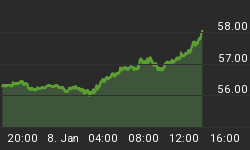11/26/2014 7:52:21 AM
Good morning Traders,
With the OPEC meeting tomorrow and oil making a strong move lower, we explore the potential of a long position here by viewing almost all our indicators on oil.
What we're looking for is extremes and trends and energy. Are traders positioning very bearish or bullish here? And what is the trend of those bets. Better than any poll, what traders actually do with their money speaks much louder...
On another note, we're re introducing the ETF Swing Trader, which will use this research to manage a 5 position ETF portfolio. While we call it a swing trading service, the real benefit of trading ETFs is to find the trending ones and stick with them as long as they keep trending... We'll have more on this later.
First, we'll start with our basic momentum indicator, tuned to how we trade.

Again, with our momentum timer indicators, it's all about direction and level. The trend here is bearish, but normally coming off both time frames giving a buy, we could expect a 10% return. Why?

As we've laid out this week, the dollar has been impacting oil since July. Here are a couple more indicators that compare oil and the dollar. It's useful for finding time to fill your oil tank at home. Have you filled yours?

This works more as an RSI indicator, but extremes periodically matter:

On the bullish side, inventories are decreasing.
If you're NEW to www.stockbarometer.com and want to learn more - feel free to visit our site. We have a free newsletter where you can get more of our research every week as well as $1 trials to every service we offer, including FUTURES and FOREX trading advice...

And looking at our Leading Indicator, we're seeing correlation with price action pointing towards a bounce and consolidation over the next year.

Ok, now we're going to start looking at oil option activity:

All of these show us what oil option traders are doing.

Option volume is cranking - that actually leads to muted action.

The fear gage isn't that high...

Here's the same data with 1 month returns (that's the extent of our trading horizon).

This is a key indicator - as volatility is trending lower. This will be key to the next move.

Here's a measure of efficiency with oil volatility. One way we can determine the significance of the readings.

And our third measure of volatility (and final one for today) suggests the trend in volatility is increasing (bearish) the level is below zero (bearish) but the reading is reaching a relative extreme (Bullish).

Conclusion? One of the reasons we haven't made a trade in oil yet is because 1) we're looking to play the long side and 2) we're not seeing any significant extremes to cause a change in direction - especially considering the amount of damage that has been done to the price of oil.
We also look at oil and ecri data and oil and jobs data and monitor for correlations. We're about to go through a normal cyclical downturn and periodically that cyclical event can turn secular. It's way too early to be making those statements, but it buys into the frequency magnitude argument of what to expect next. For all intents and purposes, oil will bounce, but the bounce is likely not to be significant. I'm more leaning towards a consolidation, driving some of this new volume OUT of the oil market, frustrating traders. And once that happens, oil will bounce and set the upper level of the trading range for the next year, and it could be a year before oil completes the consolidation and moves lower like gold is doing now...
That's it for today. I hope you all have a nice Thanksgiving. I'm up very early, so I may put out a Turkey Day article. And if you have any questions or areas, feel free to email us at info@stockbarometer.com and we'll make sure to touch on some of your questions in our coming articles. Things are about to slow down, so we'll start focusing our efforts on 2015 models and forecasts - so all input is welcome.
Regards,
















